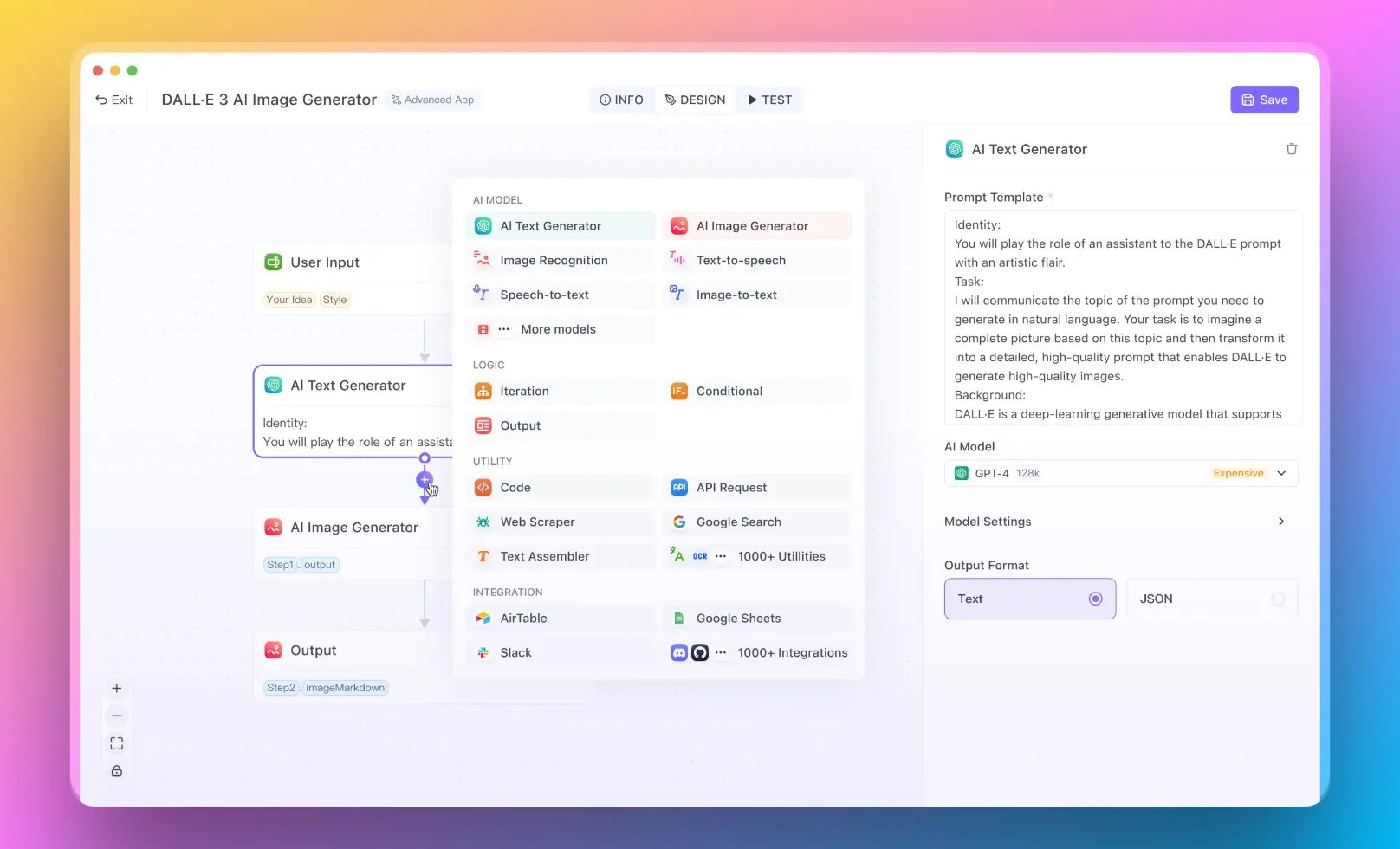You can easily create AI workflows with Anakin AI without any coding knowledge. Connect to LLM APIs such as: GPT-4, Claude 3.5 Sonnet, Uncensored Dolphin-Mixtral, Stable Diffusion, DALLE, Web Scraping.... into One Workflow!
Forget about complicated coding, automate your madane work with Anakin AI!
For a limited time, you can also use Google Gemini 1.5 and Stable Diffusion for Free!

In a groundbreaking move, Microsoft has unveiled its latest AI models: Phi-3.5-MoE-instruct and Phi-3.5-vision-instruct. These models represent a significant advancement in artificial intelligence, combining efficiency with powerful capabilities in both language processing and visual understanding. Let's dive into the technical details and implications of these innovative models.
Phi-3.5-MoE-instruct: Mixture of Experts
Building on the success of Phi-3 Mini, the Phi-3.5-MoE-instruct model takes things to the next level:
Key Features:
- 16x3.8B parameters (6.6B active - 2 experts)
- Outperforms Gemini flash
- 128K context window
- Multilingual capabilities
- Same tokenizer as Phi-3 Mini (32K vocab)
- Trained on 4.9T tokens
- Used 512 H100 GPUs for 23 days of training
Architecture and Design
Phi-3.5-MoE-instruct employs a Mixture of Experts (MoE) architecture, allowing it to leverage a large parameter space while maintaining computational efficiency. This design enables the model to activate only a portion of its total parameters during inference, resulting in faster processing without sacrificing performance.
Training and Performance
The extensive training on 4.9T tokens, including 10% multilingual data, contributes to the model's robust performance across various benchmarks. Let's compare its performance with other models:
| Model | Average Benchmark Score |
|---|---|
| Phi-3.5-MoE-instruct | 69.2 |
| Mistral-Nemo-12B-instruct-2407 | 61.3 |
| Llama-3.1-8B-instruct | 61.0 |
This table clearly demonstrates the Phi-3.5-MoE-instruct's superior performance, even when compared to larger models.
Multilingual Capabilities
The model supports a wide range of languages, including:
- European languages: English, French, German, Spanish, Italian, Dutch, Portuguese, Danish, Swedish, Norwegian, Finnish, Polish, Czech, Hungarian
- Asian languages: Chinese, Japanese, Korean, Thai
- Middle Eastern languages: Arabic, Hebrew, Turkish
- Slavic languages: Russian, Ukrainian
This multilingual support makes Phi-3.5-MoE-instruct a versatile tool for global applications.
Phi-3.5-vision-instruct: Bridging Language and Vision
The Phi-3.5-vision-instruct model extends the Phi-3 family's capabilities into the realm of visual AI:
Key Features:
- 4.2B parameters
- Outperforms GPT-4o on averaged benchmarks
- Specialized in TextVQA and ScienceVQA
- Trained on 500B tokens
- Utilized 256 A100 GPUs for 6 days of training
Architecture and Capabilities
Phi-3.5-vision-instruct combines an image encoder, connector, projector, and the Phi-3 Mini language model. This architecture allows for efficient processing of both text and image inputs, enabling a wide range of visual AI tasks:
- General image understanding
- Optical character recognition
- Chart and table interpretation
- Multiple image comparison
- Multi-image or video clip summarization
Benchmark Performance
The model shows impressive results across various vision-language benchmarks:
| Benchmark | Phi-3.5-vision-instruct Score |
|---|---|
| MMMU (val) | 43.0 |
| MMBench (dev-en) | 81.9 |
| TextVQA (val) | 72.0 |
These scores demonstrate the model's competitiveness with larger, more resource-intensive models in the field of visual AI.
Shared Features of Phi-3 Models
Both Phi-3.5-MoE-instruct and Phi-3.5-vision-instruct share several important characteristics:
Open Source and Licensing
- Released under the MIT license
- Allows for broad commercial and research applications
Hardware Optimization
- Optimized for NVIDIA A100, A6000, and H100 GPUs
- Utilizes flash attention for improved performance
Responsible AI Practices
- Underwent rigorous safety post-training processes
- Includes supervised fine-tuning and reinforcement learning from human feedback
- Evaluated through red teaming, adversarial conversation simulations, and safety benchmark datasets
Limitations and Considerations
- Potential for biases and information reliability issues
- Requires careful consideration in high-risk scenarios
Implications and Future Directions
The release of the Phi-3 family of models has significant implications for the AI field:
Efficiency in AI: Demonstrates that smaller, more efficient models can compete with larger counterparts, potentially reducing computational costs and environmental impact.
Democratization of AI: The open-source nature and efficiency of these models could make advanced AI more accessible to researchers and developers with limited resources.
Multimodal AI Advancement: The vision model's strong performance suggests a narrowing gap between language and visual AI capabilities.
Responsible AI Development: Microsoft's emphasis on safety and ethical considerations sets a standard for responsible AI development in the industry.
Potential Applications: These models open up possibilities in various fields:
- Improved natural language processing for chatbots and virtual assistants
- Enhanced document analysis and information extraction
- Advanced visual search and image understanding capabilities
- More sophisticated multimodal AI applications combining text and visual inputs
Conclusion: The Phi-3 Revolution
Microsoft's Phi-3 family represents a significant leap forward in AI technology. By combining efficiency with powerful capabilities, these models challenge the notion that bigger is always better in AI. The Phi-3.5-MoE-instruct's ability to outperform larger models while maintaining a smaller active parameter count is particularly noteworthy, as is the Phi-3.5-vision-instruct's competitive performance in visual AI tasks.
The open-source nature of these models, coupled with their MIT licensing, paves the way for widespread adoption and innovation. As researchers and developers begin to explore the full potential of these models, we can expect to see new applications and advancements across various domains.
However, it's crucial to approach these powerful tools with responsibility and ethical consideration. Microsoft's emphasis on safety and evaluation processes sets a positive example for the industry, highlighting the importance of considering potential biases and limitations.
As we look to the future, the Phi-3 family of models may well be remembered as a turning point in AI development – a moment when efficiency and performance converged to create more accessible, powerful, and versatile AI tools. Whether you're a researcher, developer, or simply an AI enthusiast, the Phi-3 models offer exciting possibilities and a glimpse into the future of artificial intelligence.



